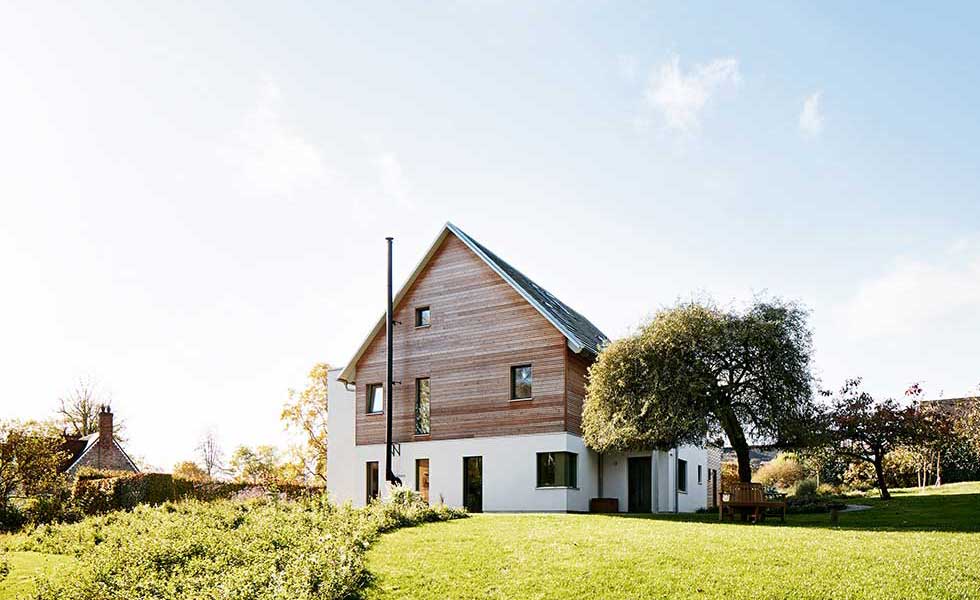What is Section 106?
Find out more about the Section 106 planning obligation and what it means for the self builder

A Section 106 is a legal agreement between an applicant seeking planning permission and the local planning authority, which is used to mitigate the impact of your new home on the local community and infrastructure. In other words, a new house will mean another car(s) on the roads and perhaps your children will attend nearby schools, putting a little more strain on local services.
As such, Section 106 Agreements often require a financial contribution, made prior to the project starting. Unlike the Community Infrastructure Levy which is tariff-based, Section 106 is charged based on the specific needs of the local community and some councils use the number of bedrooms in the new home to decide what this charge should be. For example, a council might ask for a contribution to the local school for a new four-bedroom family house in an area with limited school places.
This means that the fees vary widely from place to place and some self builders were faced with Section 106 charges that made up a large proportion of their overall project cost. Exemption was introduced for self builders in November 2014, but some councils were quick to seek to challenge this decision.
Exemption for Self Builders
The exemption, first introduced by Minister for Housing and Planning, Brandon Lewis MP, by Ministerial Statement on 28 November 2014, freed self builders from the unpopular Section 106 planning obligation payments which required them to divert £10,000s from their budget for a new home, into a payment towards roads, schools, affordable housing and other local authority infrastructure projects.
NaCSBA, the National Custom and Self Build Association, campaigned for the exemption on the grounds that the payments – designed to mitigate the impact of major development on local infrastructure – were disproportionate to the impact of small developments, especially single self build homes and failed to recognise the exceptional costs of developing a small site.
The exemption, applied to sites in England of 10 new homes or less (five in designated rural areas), was welcomed by self builders and small housebuilders alike.
Section 106 Exemption Deemed ‘Unlawful’
Some local authorities, however, disagreed with the exemption and on 31 July 2015, the judge in a High Court case brought by two neighbouring authorities, Reading and West Berkshire, found the exemption unlawful, and it was quashed just eight months after its introduction leaving many self builders in indefinite limbo.
Bring your dream home to life with expert advice, how to guides and design inspiration. Sign up for our newsletter and get two free tickets to a Homebuilding & Renovating Show near you.
The High Court Judge’s ruling clearly contradicted the intentions of the Government and its stated commitment to boost housebuilding, help smaller local housebuilders and double the size of the self build sector to 20,000 homes a year by 2020.
Reintroduction of the Exemption
NaCSBA immediately launched a campaign for the reintroduction of the exemption and in May 2016 the Court of Appeal overturned the High Court and upheld the lawfulness of the Ministerial Statement which granted exemption. This took immediate effect.
Another U-Turn?
Unfortunately, in September 2016 the exemption was called into question again. South Cambridgeshire and Elmbridge councils raised planning appeals, and it was decided that where a new Local Plan has been adopted after 28 November 2014 (when the exemption was introduced) this outweighs the Section 106 exemption.
Fortunately, this does not apply to all councils and a new National Planning Policy Framework (which was due in the summer of 2016) should be updated with Section 106 exemption for self builders taken into account.
The Current Status of Section 106: What to Do if You are Building a New Home
If you are planning to build, contact your local authority and investigate their approach to Section 106 contributions. The majority are upholding the exemption, but some with a recently adopted Local Plan may take a different view.
If you find they may be likely to impose Section 106, consider delaying (or withdrawing) your application until the National Planning Policy Framework is updated. Once the exemption is incorporated within legislation, it will have more weight than the Local Plan and the exemption will be in place once and for all.

The former Editor of Homebuilding & Renovating magazine, Jason is an experienced self builder and has recently finished renovating his 1960s home. Jason is now Managing Director of Future PLC's Homes' portfolio, which includes UK-leading titles such as Ideal Homes, Livingetc and Homes & Gardens. He is also the author of The Self Build Dream. You can catch Jason in the seminar theatres and Advice Centre at many of the Homebuilding & Renovating Shows across the UK.
